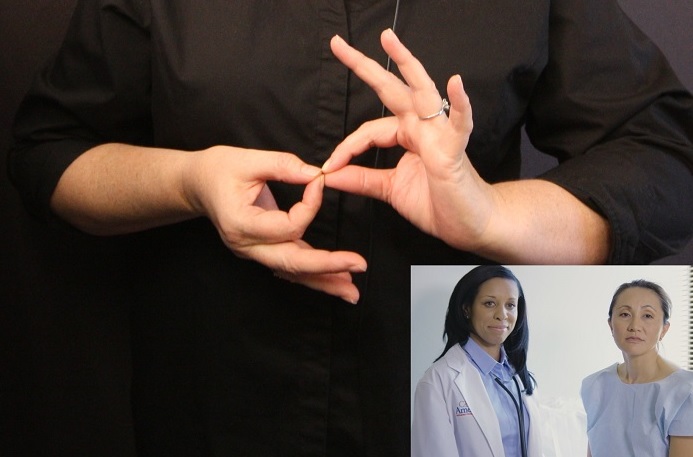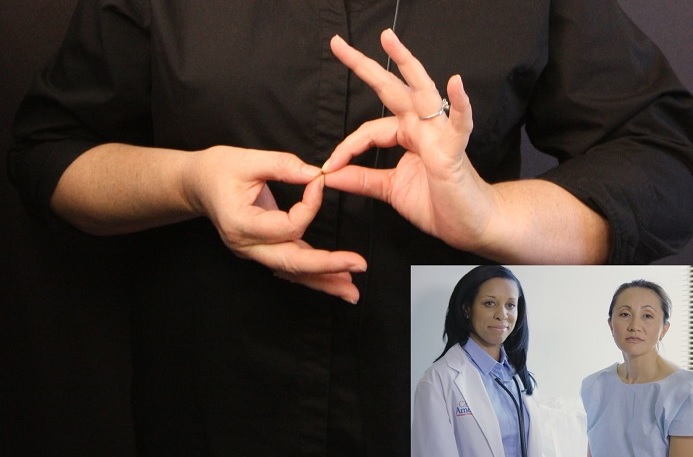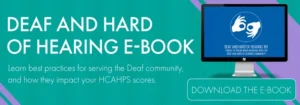
In 2016, CyraCom hosted a webinar entitled Tips for Working with the Deaf and Hard of Hearing, the event featured CyraCom’s ASL Center Manager Victor Collazo. Victor took the time to debunk a number of misconceptions surrounding Deaf culture, and we’re happy to reshare his conclusions here for those who may have missed out:
MYTH 1: SIGN LANGUAGE IS UNIVERSAL. ONCE YOU KNOW IT, YOU CAN COMMUNICATE WITH THE DEAF ALL OVER THE WORLD
It’s easy to watch someone signing and assume that those signs would work anywhere. But that’s not the case like spoken languages, sign language varies from place to place, and most countries have their own unique set of signs. ASL is the predominant sign language in the United States and English-speaking Canada, but even here it is not used universally by members of the Deaf and Hard of Hearing community.
MYTH 2: THE DEAF CAN UNDERSTAND YOUR SPOKEN LANGUAGE BY LIP READING
This myth has been popularized by television and movies someone who is profoundly deaf can understand every word someone speaks by watching their lips move. In reality, a skilled lip reader can get about 40% of spoken words correct using this method. That s nowhere near enough to carry on a friendly conversation, let alone understand complex medical scenarios and make decisions in a hospital setting.
MYTH 3: IF YOU RE TALKING TO A DEAF PERSON, SPEAK SLOWLY SO THEY CAN UNDERSTAND YOU
Speaking slowly or loudly or over-articulating words can come across as condescending, so it s important only to do this if the patient asks it. Victor explained that this method can work for someone who is Hard of Hearing because they have some hearing ability, but it will be of no help to someone who is profoundly deaf.

MYTH 4: IT S EFFECTIVE TO WRITE NOTES BACK AND FORTH TO COMMUNICATE WITH THE DEAF
Many hearing people, when unable to communicate verbally with the Deaf, turn to writing notes. What they often don t realize is that English and ASL are two distinctively different languages and that ASL has no written form. So a Deaf person s written communication may not follow the syntax, grammar, and subject > verb > object format of written English. Victor s example of a sentence a Deaf person might write I sick know nothing happen last week hit would leave most hearing English speakers guessing. Trying to provide medical treatment based on this type of communication could have serious repercussions.
MYTH 5: WHEN USING AN ASL INTERPRETER, TELL THE INTERPRETER WHAT YOU WANT THEM TO SAY TO THE PATIENT
Many providers will naturally talk to the interpreter, saying things like Can you please ask the patient what her symptoms are? This can make the patient feel isolated and interfere with the interpreter s proper role as a conduit. Instead, speak directly to the patient, and the interpreter will convert your words into ASL signs.
MYTH 6: A DEAF PERSON S FAMILY AND FRIENDS ARE QUALIFIED TO INTERPRET FOR THEM IN A MEDICAL SETTING
Interpreting is a profession, and doing it well involves more than simply knowing the language. Using anyone who is not a qualified interpreter in a medical setting can lead to errors and resulting liability. Additionally, a person whose friend or family is suffering a medical issue may be emotionally compromised to the point where they cannot interpret correctly, particularly in more serious situations.
Want to learn more about caring for members of the Deaf and Hard of Hearing community? Download our e-book here:









